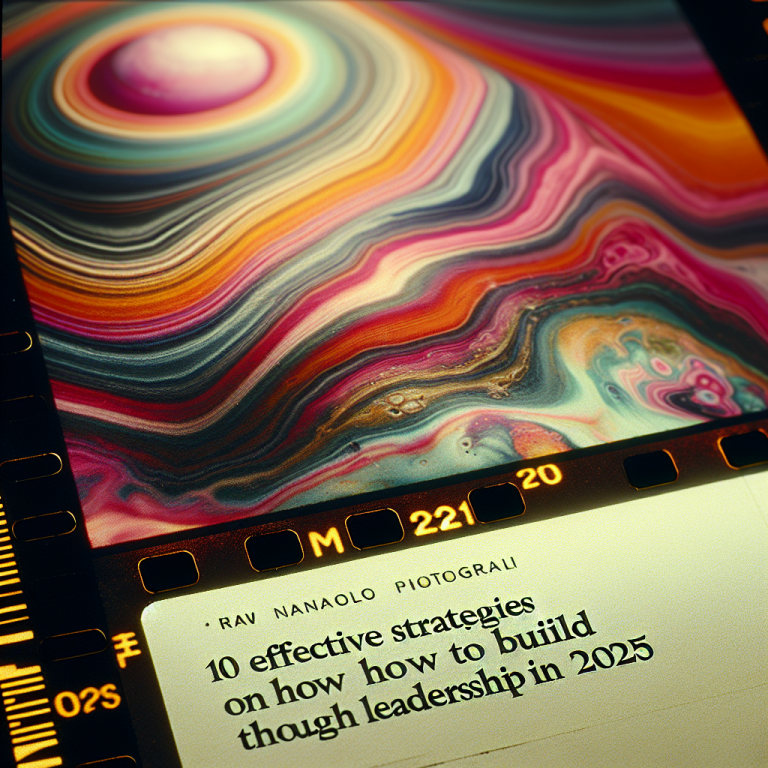How to Build Trust Through Your Blog: 7 Effective Strategies for 2025
- 1. Be Authentic and Transparent
- 2. Create Consistent and High-Quality Content
- 3. Engage Actively with Your Audience
- 4. Leverage Social Proof and Testimonials
- 5. Maintain Professional Design and User Experience
- 6. Provide Accurate and Reliable Information
- 7. Share Personal Stories and Experiences
1. Be Authentic and Transparent
Show Your True Self
In 2025, readers are more perceptive than ever. They want to connect with real people, not faceless brands. Being authentic means sharing your true thoughts, experiences, and values openly on your blog. When you show vulnerability, it fosters trust and encourages your audience to do the same. Remember, honesty is the foundation of any trustworthy relationship.
For example, if youâre reviewing a product or service, admit when something didnât meet expectations. This transparency demonstrates integrity, which is crucial for how to build trust through your blog. Readers respect bloggers who are honest, even if it means admitting mistakes instead of glossing over flaws.
Practically, incorporate personal insights and behind-the-scenes glimpses into your content. Share challenges you’ve faced and lessons learned. This relatability creates a connection that nurtures loyalty over time.
The Power of Openness
Being transparent extends beyond sharing successes. It involves clear communication about your intentions, affiliations, and disclosures. In 2025, compliance with advertising and sponsorship regulations has become more rigorous. Clearly disclose sponsored content or affiliate links to uphold credibility and trust.
Moreover, transparency about your methodology, sources, and data enhances your authority. When your audience knows theyâre getting honest, well-researched information, theyâre more likely to trust your recommendations and see you as an authority in your niche.
Tip: Create a dedicated transparency page that details your values, sponsorship disclosures, and even your content creation processes.
2. Create Consistent and High-Quality Content
Establish a Reliable Publishing Schedule
Readers value consistency; it shows that youâre committed and reliable. When you publish regularly, your audience knows when to expect new content, which builds anticipation and trust. In 2025, managing a content calendar is more crucial than ever, especially with multiple content channels.
Appearing on schedule encourages repeat visits and positions you as an authoritative source in your niche. Consistency also signals to search engines that your site is active, boosting your SEO rankings.
Practical tip: Use tools like editorial calendars and automation platforms to plan and schedule your posts ahead of time. This ensures you stay consistent, even during busy periods.
Focus on Value and Quality
While frequency matters, quality is paramount. Your content should be well-researched, accurate, and genuinely helpful. In 2025, readers are increasingly skeptical of clickbait or shallow articles; they seek depth and actionable insights.
Enhance your posts with data, visuals, and practical tips. Break content into digestible sections, include bullet points, and use engaging images that support your points. Remember, valuable content encourages sharing and backlinks, further establishing your credibility.
Pro tip: Regularly audit your existing content to update outdated info and improve quality. High-quality, trustworthy content is one of the most effective ways how to build trust through your blog.
3. Engage Actively with Your Audience
Respond to Comments and Messages
Engagement builds a community. When readers leave comments or reach out, take the time to respond thoughtfully. In 2025, interactive communication is vital for fostering a sense of belonging and trust.
Responding promptly shows that you value your audienceâs input, which enhances your credibility. If someone asks a question or shares feedback, reply in a way that is helpful and encouraging. This creates a positive feedback loop where trust naturally develops.
Additionally, consider hosting live Q&A sessions or webinars to connect in real-time. These direct interactions further humanize your brand and solidify your reputation as a trustworthy expert.
Encourage User-Generated Content
Invite your readers to share their stories, reviews, or experiences related to your niche. User-generated content provides social proof and demonstrates real-world trust in your brand. Highlighting testimonials, reviews, or success stories on your blog boosts your authority and persuades new visitors to trust you.
Make it easy for your audience to contribute by creating simple submission forms or community forums. Recognizing and showcasing their contributions fosters loyalty and trustâkey elements of how to build trust through your blog.
Tip: Regularly feature these stories in your content to keep your community engaged and demonstrate ongoing trustworthiness.
4. Leverage Social Proof and Testimonials
Showcase Real Success Stories
Nothing builds trust faster than proof. Share testimonials, case studies, and success stories from satisfied readers or clients. In 2025, authentic endorsements carry significant weight, especially when they include specific results or experiences.
For example, a detailed case study explaining how your advice helped someone achieve their goals can serve as proof of your expertise. Use quotes, photos, and detailed narratives for maximum impact.
Make testimonials easily accessible on your websiteâconsider dedicated pages or highlighted sections. Seeing a pattern of satisfied users reassures new visitors that your blog provides genuine value.
Utilize Social Media to Amplify Trust
Share your testimonials and success stories across social channels to reach a broader audience. Social proof on platforms like LinkedIn, Instagram, and Facebook adds layers of trustworthiness, especially when itâs shared by real people.
Encourage your audience to share their experiences publicly by tagging your accounts. These genuine endorsements act as powerful proofs, influencing potential followers and customers.
Research shows that 70% of consumers trust peer reviews over traditional advertising in 2025, emphasizing the importance of leveraging social proof effectively.
5. Maintain Professional Design and User Experience
Invest in a Clean, Mobile-Responsive Design
A well-designed blog isnât just visually appealing; itâs also a trust factor. In 2025, over 60% of web traffic comes from mobile devices, so a responsive design is essential. When your site adapts seamlessly to different screens, visitors feel confident navigating and reading your content.
Gestures like intuitive menus, fast-loading pages, and clear calls-to-action further enhance trust. Cluttered or slow sites deter visitors and diminish your credibility.
Pro Tip: Use modern themes and regularly update your website to ensure optimal performance and aesthetic appeal.
Ensure Clear Navigation and Accessibility
User experience (UX) plays a critical role in how to build trust through your blog. Clear menus, organized content categories, and a search function help visitors find what they need quickly, increasing trust in your site’s professionalism.
Accessibility features such as alt text for images, adjustable font sizes, and compatibility with screen readers demonstrate inclusivity and care for all users.
Remember, a positive user experience encourages longer visits, return visits, and sharingâkey ingredients in building long-term trust.
6. Provide Accurate and Reliable Information
Research and Fact-Check Rigorously
In 2025, misinformation is a major concern. Your credibility depends on the accuracy of your content. Always base your posts on reputable sources, and fact-check thoroughly before publishing.
Sharing well-researched, scientifically-backed information positions you as a trusted authority in your niche. Use data and references to reinforce your points, and cite credible sources to back your claims.
Consistency in providing reliable information encourages your audience to trust your recommendations and see your blog as a go-to resource.
Be Honest About Limitations
Every niche has nuances. If thereâs information you donât know or complex topics youâre unsure about, acknowledge this openly. Honesty about your limitations fosters transparency and trustworthiness.
Offer to update or clarify information as new data becomes available. This ongoing commitment to accuracy shows your dedication to integrity, a vital aspect of how to build trust through your blog.
Ultimately, trust is built when readers see you as a reliable, honest source of information.
7. Share Personal Stories and Experiences
Connect Through Authentic Narratives
Personal stories resonate more deeply than generic advice. Sharing your journey, struggles, and successes humanizes your brand. This openness encourages your audience to trust you as a real person with authentic experiences.
For instance, if you faced a challenge related to your niche, describe how you overcame it, what you learned, and how it shaped your perspectives. These stories foster emotional connections and establish credibility.
Research shows that storytelling increases engagement and trustâmaking it an essential element in how to build trust through your blog.
Maintain Boundaries and Privacy
While sharing personal stories, respect your privacy and set boundaries to maintain professionalism. The goal is authenticity without oversharing sensitive information.
Balance transparency with discretion to ensure your stories serve your brand and foster trust without compromising personal boundaries.
By thoughtfully sharing your experiences, you position yourself as relatable and trustworthy, encouraging your audience to follow your journey.
Conclusion
In 2025, understanding how to build trust through your blog is essential for long-term success. Authenticity, consistency, engagement, social proof, and high-quality, reliable content form the pillars of trustworthiness. By implementing these seven strategies, youâll foster genuine relationships with your audience, earn their confidence, and grow a loyal community around your brand. Remember, trust is the currency of successful bloggingâinvest in it wisely to thrive in the competitive digital landscape of 2025.
Frequently Asked Questions
1. How long does it take to build trust through a blog?
Building trust is a gradual process that can take anywhere from several months to years, depending on consistency, authenticity, and engagement efforts. Regularly providing value accelerates trust growth.
2. Why is transparency important in blogging?
Transparency fosters authenticity, instrumental in how to build trust through your blog. It helps your audience see you as honest and reliable, strengthening loyalty and credibility.
3. Can sharing personal stories impact my blogâs reputation?
Absolutely. Well-crafted personal stories humanize your content, creating emotional bonds that enhance trust. However, it’s important to maintain professionalism and set appropriate boundaries.
4. What are the top ways to increase trustworthiness in 2025?
Providing accurate information, engaging actively with readers, showcasing social proof, maintaining a professional design, and being authentic are key ways to increase trustworthiness this year.










